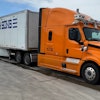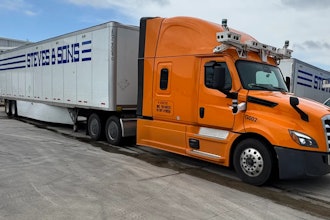
Changes in consumer demand and new opportunities in renewable energy production are leading energy companies to invest in alternative sources, modernize their infrastructure and seek new revenue streams. This will continue as they build smarter infrastructures and integrate new technologies, including analytics platforms, in order to leverage trends shaping their marketplace.
The Search for Renewables
Investment in renewables represents over half of the new power capacity around the world, and, driven by wind and solar, five-year growth projections are increasing annually. This translates to energy suppliers diversifying into renewables. Witness the China Three Gorges Power Corporation, which diversified into wind power back in 2007 and is now one of the largest wind power suppliers in the world.
Jumping into a new renewable sector means essentially starting a new business from the ground up – and setting it up fast. This means energy companies must forget traditional monolithic business solutions. Instead, organizations need to think about more agile business solutions that can be up and running in a matter of weeks.
Here’s the new math: a company that can set up a new venture with a financial solution in 4-6 weeks or simple supply chain management in 2-3 weeks is at a distinct advantage when entering the renewables arena. This can be more easily achieved within a hosted cloud environment, which also enables the solution to be refined and adjusted as the organization gets established.
Consumers Call the Shots
In 2017 the consumer is in the driver’s seat. The Energy Supplier is now a Lifestyle Provider with the rise of a whole new energy ecosystem. IDC Predicts that by 2020, 20 percent of Fortune 500 companies will generate 2.5GW of electricity. Add to this the number of consumers with solar roofing and wind turbines who sell energy back to the grid, and you start to see a transformation from centralized supplier to a more distributed, bi-directional service provider.
Consumers want choice and flexibility in terms of when and how they consume - and now supply - power. This can be achieved through the evolution of smart grids where sensors and meters provide a granular level of power usage detail. With a more accurate, real-time account of power usage, consumers will be able to manage and optimize consumption habits.
But the shift from energy supplier to Lifestyle Provider will require a more dynamic and optimized approach to maintenance and field service. To build and maintain a smart infrastructure, field service technicians and engineers need to be empowered by connected technologies.
This means that companies starting to digitally transform their processes by integrating new technologies like wearables, augmented reality and voice applications will see better asset management, planning, execution and service levels.
Drone Compliance Becomes a Thing
Drones are fast becoming a norm in the energy market for visually assessing pipelines, powerlines and other assets. The next step will be for data from drones to be integrated with enterprise software platforms in generating work orders. This can be sent straight to engineers in the field for a quicker response with minimal disruption.
As drones become more adaptable, there is also the potential for them to carry out repairs and manual tasks. However, as their role increases, expect to see more regulations and compliance issues – and not just from air safety. Comprehensive regulations are still yet to be sorted for 2017, so being aware of the shifting landscape in different geographies will be key to remaining compliant.
The Expansion of Machine Intuition
From IP-enabled sensors to digital twins, assets will become increasingly digitalized and call for leveraging advanced analytics. Machine learning is at the center of the evolution of industry 4.0. Automated, intelligent analytics platforms can learn from the aggregate of data sets collected across the enterprise and deliver greater insights on both performance and status.
These analytics are leading the development of predictive capabilities. New models produced by automated machine learning will take all the data from the smart infrastructure in producing alerts about failing assets ahead of any malfunction. These alerts will also contain detailed information about what corrective actions need to be taken to avoid disruptions.
But none of this has any real value unless this data-driven foresight is integrated with existing enterprise asset management solutions (EAM). So, the insight becomes a work-order with information about the parts, tools and action required.
The new year is presenting energy businesses with exciting opportunities, greater connectivity, more field automation, and a growing amount of data for running the business. This means that at the heart of their operation should be enterprise software that can integrate, analyse and deliver – quickly and easily.
Only then will energy companies be able to profitably provide smart services and smart energy to a growing number of consumers.
Colin Beaney is the global
industry director for energy andutilities at IFS.






















